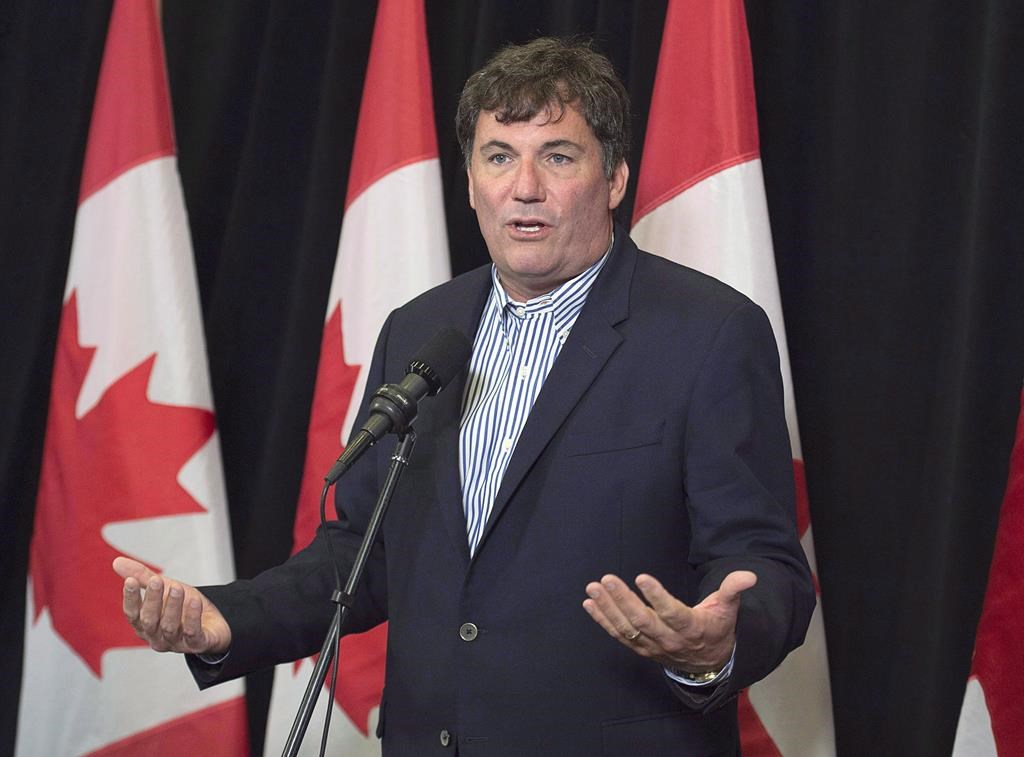Support strong Canadian climate journalism for 2025
Environment Canada is investigating allegations that fish plants in British Columbia are spewing virus-laden bloody water from processed, farmed salmon into the water off the coast of Vancouver Island.
As well, Fisheries Minister Dominic Leblanc says he is open to making additional changes to the Fisheries Act to ensure nothing flows into the water that is toxic to the already-threatened Pacific wild salmon.
The moves come after B.C. photographer Tavish Campbell published a video showing clouds of red liquid billowing from a pipe coming out of a fish processing plant and flowing under the water in one of the most common salmon migration routes.
Although the video has just started to gain public attention, Leblanc said he received it about two weeks ago.
"It's designed to shock people," he said Wednesday. "I was suitably concerned when I saw it."
He said scientists from his department and Environment Canada are seeking clarity on the situation, including about test results Campbell says showed the bloody water was full of the piscine reovirus, a common virus in farmed salmon that is deadly to wild salmon.
In Norway, there are strict regulations about what fish processors have to do to disinfect what's known as bloodwater, because they know about the extensive diseases carried by farmed fish, Campbell says.
"In beautiful British Columbia we're just dumping it in the channel but it's out of sight so no one knows," Campbell says in the video, filmed during three separate dives between April and November.
B.C. Environment Minister George Heyman is also investigating, and has pledged to do a full audit of the plants in the video, as well as those across the province to make sure they are compliant with provincial regulations.
A spokesman for Heyman told The Canadian Press on Wednesday there are provincial regulations for fish processing facilities that include the requirement of an effluent discharge permit. Two of the plants in the Campbell video were issued permits more than 20 years ago; one is in the process of being updated now to reflect more modern standards including better filtration and disinfection technology.
Leblanc said the government has already committed to updating the Fisheries Act to "incorporate modern safeguards" and if there are ways to do that to protect wild salmon he wants to hear them.
"I would be open to all kinds of thoughtful suggestions to make sure that we've strengthened it in the right way."
Sum of Us, a U.K.-based advocacy group targeting corporations it believes are acting unethically, has a suggestion. It launched a petition Wednesday calling on Leblanc to change the Fisheries Act to force companies to properly treat wastewater so there are no viruses or other pathogens that can harm wildlife.
Sum of Us Canadian spokeswoman Emma Pullman said there are no regulations in Canada at either the provincial or federal level to control or monitor what is in the wastewater released into the ocean from fish farms and processing plants.
NDP fisheries critic Fin Donnelly said Leblanc's job is to protect wild salmon and if water tainted with virus-infected blood is spewing into the ocean along migration routes then he's not doing his job.
"This could be the final nail in the coffin of Pacific wild salmon," said Donnelly.
BC Salmon Farmers Association executive director Jeremy Dunn said in a written statement he understands why people are concerned by the video but insists the rules are being followed and the discharge is safe.
"While the wastewater remains red in colour, the water being discharged from Browns Bay Packing Company is treated to remove solids and ensure pathogens are neutralized," said Dunn.
Leblanc said he's hopeful the updates to the Fisheries Act will be ready to introduce in the first few months of 2018.




Comments